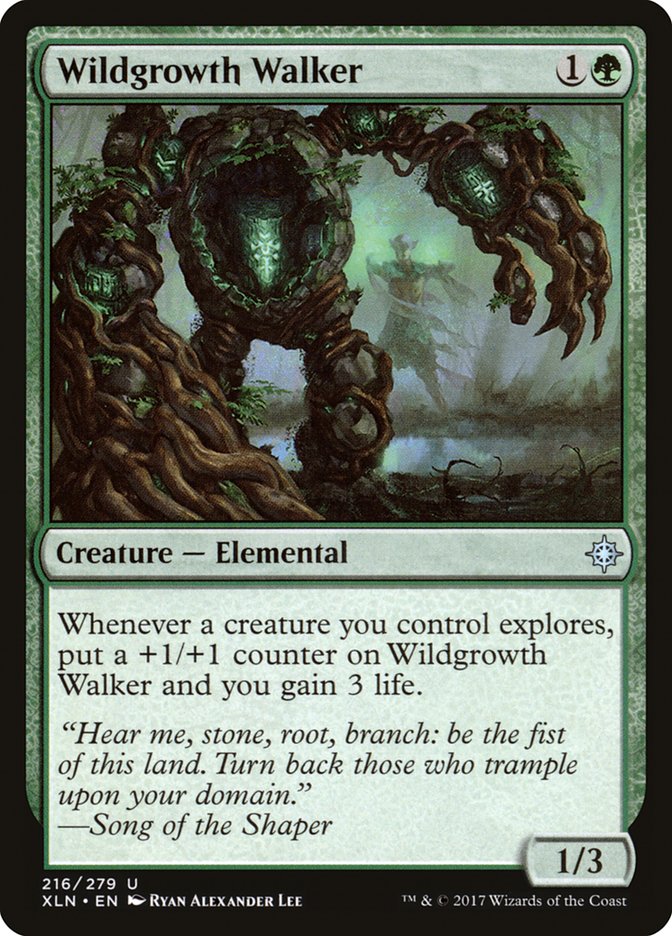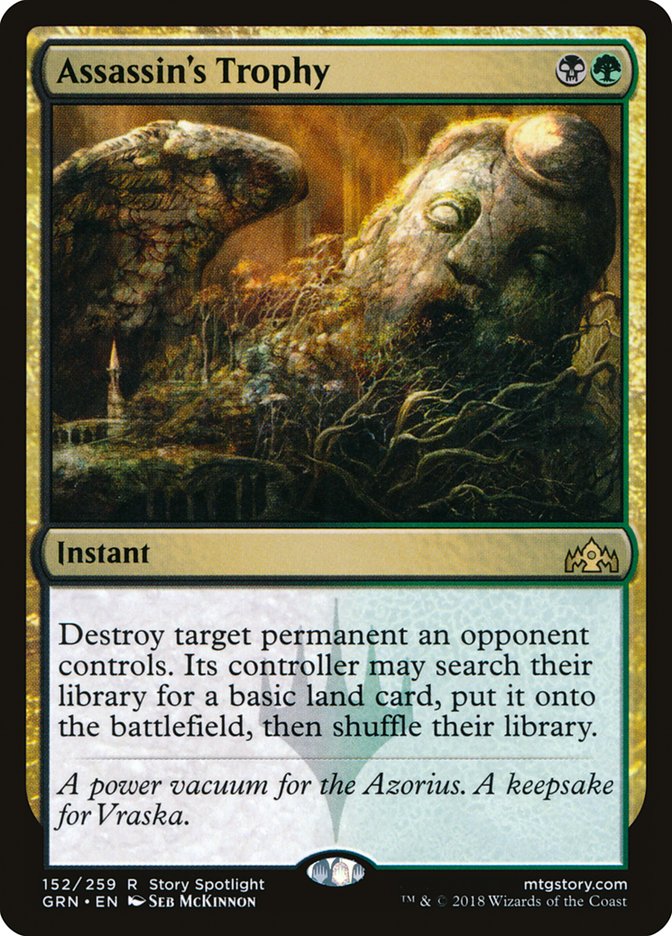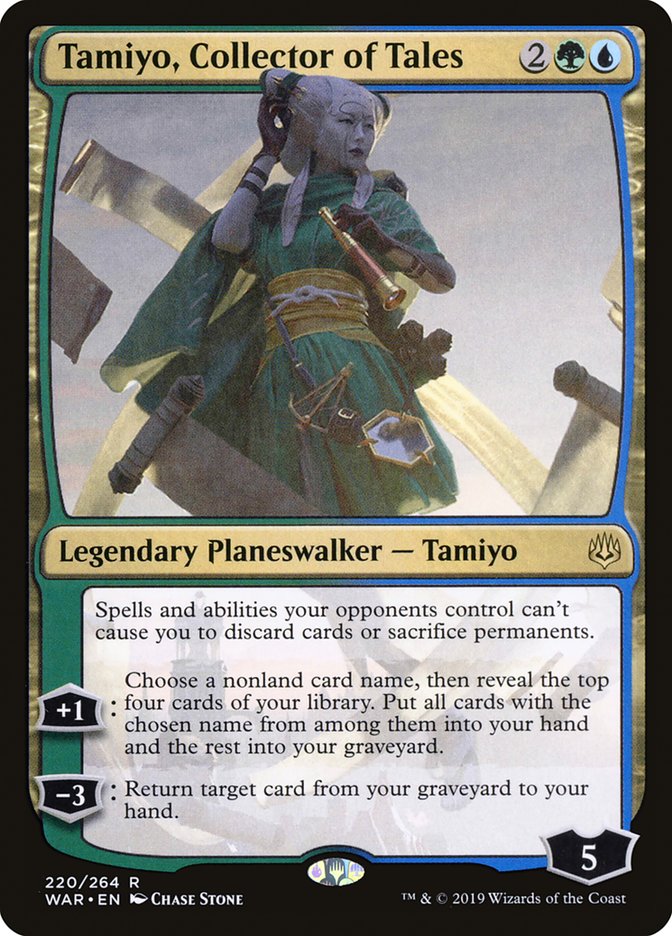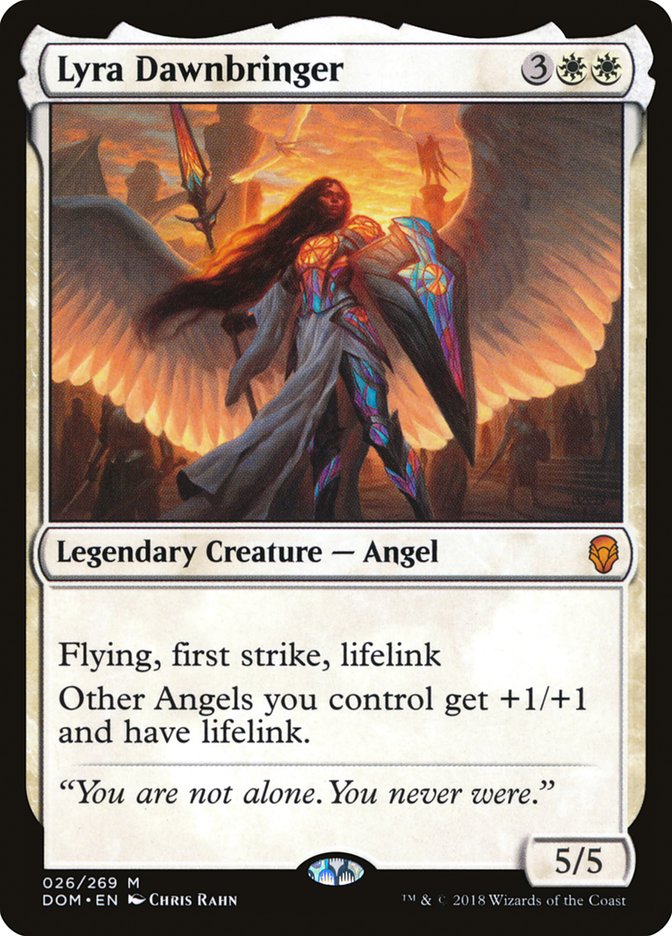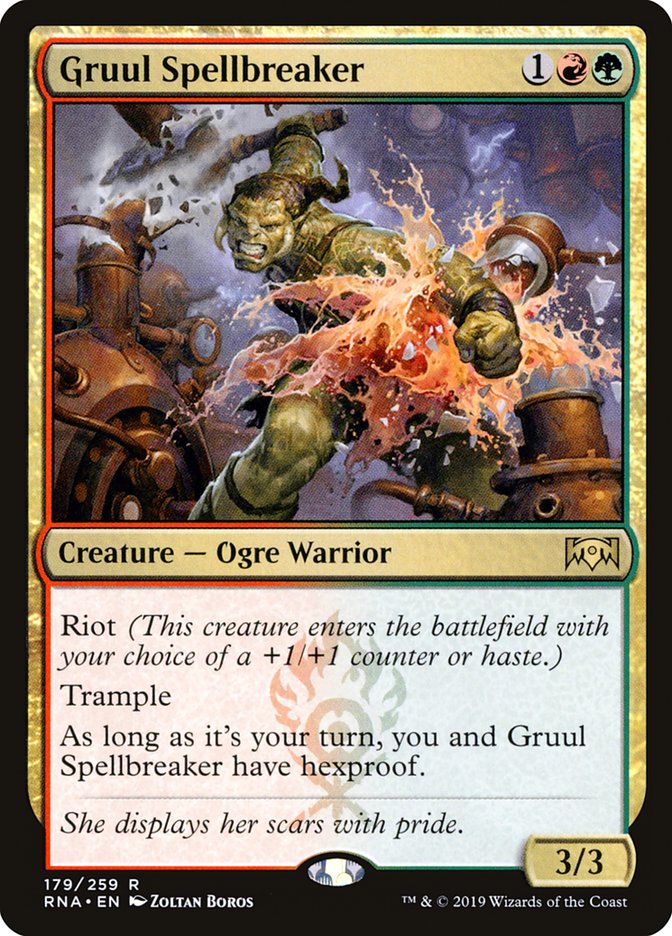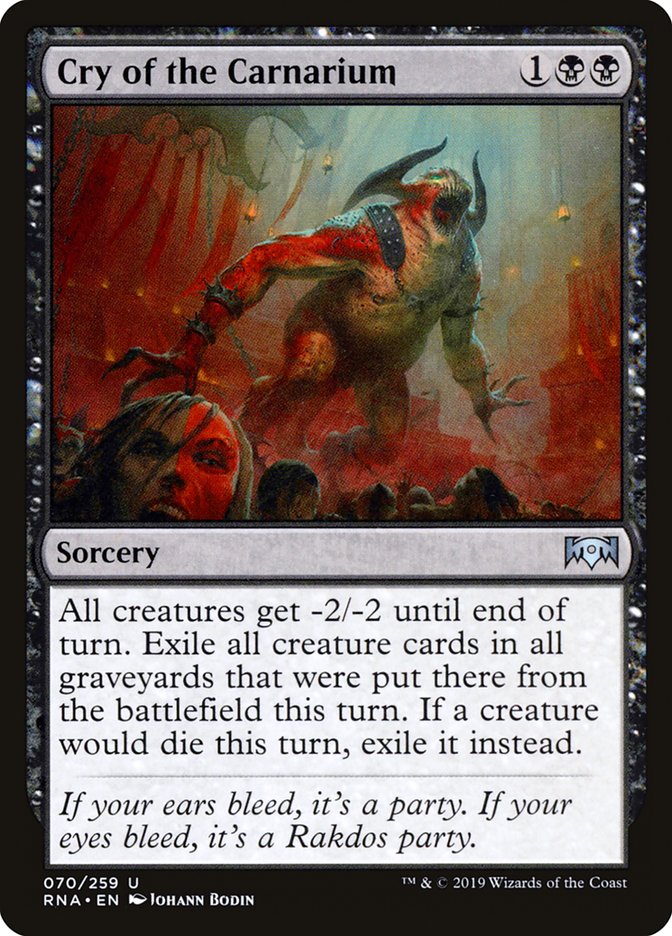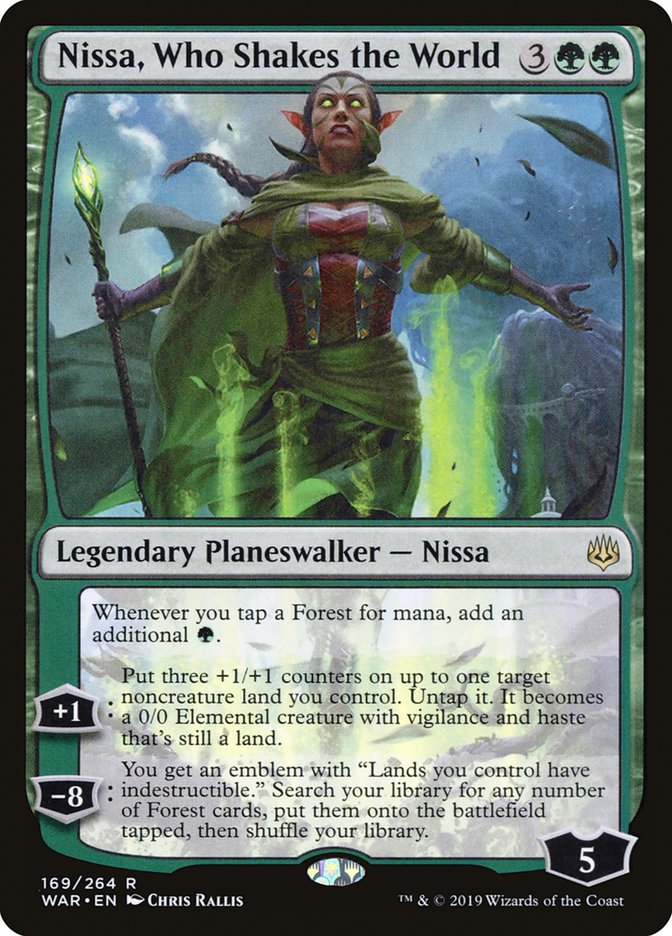I don’t even know how many top-tier decks there are to play in War of the Spark Standard, and I’m a little afraid to ask. For a format that has changed day by day, it feels like few of the old options have actually gone away and we have just kept adding more and more new ones to the pile.
Among the top handful(s) of decks, what are the actual reasons to play them over the rest, and why wouldn’t we play them over something else?
Mono-Red Aggro
Creatures (20)
- 4 Fanatical Firebrand
- 4 Ghitu Lavarunner
- 4 Goblin Chainwhirler
- 4 Viashino Pyromancer
- 4 Runaway Steam-Kin
Planeswalkers (2)
Lands (20)
- 20 Mountain
Spells (18)

Why You Should Play Mono-Red Aggro:
Mono-Red Aggro has just put up result after result in a format that has rapidly moved underneath it. There’s something to be said about that level of establishment and comfort.
The draw to Mono-Red Aggro on a tactical level is that your opponent has to do very specific things to thread the needle. They have to stop your one-mana creatures almost immediately, and then turn everything around and kill you before you draw enough burn or an Experimental Frenzy to recover.
They also have to have a plan against Mono-Red Aggro turning into the control deck with Experimental Frenzy. Any deck trying to small-ball overwhelm you gets to experience what happens in Mono-Red mirrors: everything trades, someone draws Frenzy, the other doesn’t, it’s over. Only they don’t have Frenzy, so it’s over for them.
Why You Shouldn’t Play Mono-Red Aggro:
The non-Experimental Frenzy cards in Mono-Red Aggro are really low-impact. There is a huge time aspect to bricking their early drops, but if you just pass that test, their deck turns bad in a hurry.
That wasn’t as big an issue in the first few weeks of the format, but other decks don’t get worse over time, especially when planeswalkers are driving everyone else to scramble over early traction with cards like Thorn Lieutenant that incidentally are a beating against red strategies.
We are reaching a point where I’m unsure I can even say Mono-Red Aggro is a great fallback strategy. If you’re showing up with Mono-Red Aggro this weekend, I think you need to mean it and have all the tricks under your belt.
Esper Midrange
Creatures (8)
Planeswalkers (12)
- 4 Teferi, Hero of Dominaria
- 1 Liliana, Dreadhorde General
- 4 Teferi, Time Raveler
- 3 Narset, Parter of Veils
Lands (26)
Spells (14)

Why You Should Play Esper Midrange:
This is where we get into the defining aspect of this Standard format. Playing answers is not great, but you have to play answers. This is the whole split between answers always leaving you a card down against planeswalkers, but the format also having must-kill threats like Hero of Precinct One.
Esper Midrange is probably the best middle ground between all these aspects. Thought Erasure is the answer that trades evenly on cards for planeswalkers, and your deck gets to play great planeswalker and non-planeswalker threats to fork your opponent’s priorities.
Why You Shouldn’t Play Esper Midrange:
Nothing from War of the Spark solved the core issue with Esper decks from Ravnica Allegiance and even Guilds of Ravnica Standard.
You have threats. You have answers. You have cards that help you pull everything together. But almost none of that overlaps the way Merfolk Branchwalker does. The issue isn’t so much Merfolk Branchwalker in the heads-up these days, but more that other decks are built in ways that they don’t need these things as much.
Esper Midrange is slowly catching up, but as long as it plays stupid four-drops like Basilica Bell-Haunt I’m skeptical it is as buttery-smooth to play as I would like it to be. Show me an Esper Midrange deck that gets to cut all the bad cards for good ones and a smooth gameplan, and I will play it in a heartbeat.
Command the Dreadhorde
Creatures (20)
Planeswalkers (10)
Lands (24)
Spells (6)
Sideboard

Why You Should Play Command the Dreadhorde:
Command the Dreadhorde might be the single most powerful effect in Standard right now. The similarly sweeping effects are either conditional (Liliana, Dreadhorde General) or require way more mana setup (Mass Manipulation). The deck also features an absurd number of good low-cost creatures to pressure planeswalkers.
That includes Wildgrowth Walker. In a format where answers are being punished due to the huge spread of threats, Wildgrowth Walker’s stock has massively risen. It used to just be a solid growing threat even when it wasn’t brick-walling aggro, and now decks aren’t nearly as full of ways to clear it out of the way.
Why You Shouldn’t Play Command the Dreadhorde:
The biggest issue with Command the Dreadhorde is also the namesake spell. Ideally you would fuel Command the Dreadhorde via a big attrition game, but this deck just doesn’t have the tools to force that. You only have three removal spells, maybe a couple more if you count Vraska, Golgari Queen. You can attack down planeswalkers, but if you are doing that, you are in good position. You are all threats, no interaction, so Command the Dreadhorde is almost a weird slow Dredge finisher.
That makes your deck a goldfish deck, but with a midrange main plan. Eww.
Esper Control
Planeswalkers (19)
- 1 Karn, Scion of Urza
- 4 Teferi, Hero of Dominaria
- 2 Kaya, Orzhov Usurper
- 2 Liliana, Dreadhorde General
- 4 Teferi, Time Raveler
- 2 Kasmina, Enigmatic Mentor
- 4 Narset, Parter of Veils
Lands (25)
Spells (16)

Why You Should Play Esper Control:
To be clear, the difference between Esper Control and Esper Superfriends is almost nothing these days. Do you play eleven planeswalkers, or the full twenty? Which I guess is the first reason to play Esper Control. It’s the not quite inverse of Mono-Red Aggro. Planeswalkers are the best cards in the format, your opponent needs to pressure them, and you get free wins from them stumbling and failing to be aggressive.
I think the real draw to this deck, and the reason to basically ignore Jeskai Superfriends at this point, is the black full control answers are the ones that actually meet the required rate for this format. Oath of Kaya handles both Mono-Red Aggro and opposing planeswalkers. Kaya’s Wrath and The Elderspell offer sweeping advantages, and as Gruul brings Rekindling Phoenix, back I think Vraska’s Contempt is slightly underplayed. Compare to the Jeskai answers, which don’t quite have the same level of “and.” Deafening Clarion doesn’t stop Mono-Red Aggro and Gruul, for instance.
Why You Shouldn’t Play Esper Control:
Everything I said about Esper Midrange applies to Esper Control, only worse. Previously Esper Control was all about bridging to Chemister’s Insight with random removal, and that just isn’t remotely viable in Planeswalker Fest Summer 2019.
There are very specific Esper Control spells to catch you up from behind, but in general the deck plays poorly against split threats, especially when you miss a beat and the opponent keeps hitting. More than any other deck, Esper Control will have games where some medium permutation of cards just unilaterally beats it, as opposed to other decks losing to a specific thing in the wrong spot. Since there are so many ways for things to line up wrong, it not only happens more against prepared opponents who build to maximize it, but it’s harder to plan for than something simpler. “I lose to Wildgrowth Walker, so add some Lava Coil” is a discrete plan. The discrete plan for Esper’s issues is “build and play a better deck.”
Jeskai Superfriends
Planeswalkers (19)
- 3 Karn, Scion of Urza
- 4 Teferi, Time Raveler
- 4 Saheeli, Sublime Artificer
- 4 Narset, Parter of Veils
- 4 Sarkhan the Masterless
Lands (25)
Spells (16)
Sideboard

Why You Should Play Jeskai Superfriends:
Planeswalkers are great.
The real reason to play Jeskai is honestly that your answers start on one, so the odds that you smother your opponent’s start and just chain off a bunch of planeswalkers is the highest possible.
Why You Shouldn’t Play Jeskai Superfriends:
Did you read the section about better answers in Esper? Jeskai is better in the perfect curves, but Esper is just a better deck at breaking up your opponent’s good plays in the imperfect games. This might sound like it goes against the issue I pointed out with Esper losing to random permutations of split threats, but Jeskai doesn’t even get to the point where it draws the wrong answer.
Gruul Spellbreaker? Yeah, that’s a wrap.
Izzet Phoenix
Creatures (13)
Lands (21)
Spells (26)

Why You Should Play Izzet Phoenix:
Izzet Phoenix is almost entirely an exploit deck for the planeswalker trends of the format.
Short on removal? Should have killed that Goblin Electromancer, and you literally have to kill every creature with the type Drake or you die on the spot.
Short on removal? I’m sure almost none of it exiles, and haste plus flying are the surefire planeswalker killers.
If you expect everyone to be stuck in the previous few decks, Izzet Phoenix is the place to be.
Why You Shouldn’t Play Izzet Phoenix:
Sometimes you draw zero Arclight Phoenix and your deck is really bad. Also…
Being a true exploit deck comes with counter-exploits.
The current builds of Izzet Phoenix are all-in on flying creatures crushing planeswalkers and clocking players. They are fairly bad at anything that just laughs that off. That includes Gruul having every creature in its deck require a Lava Coil, including the often-forgotten 5/5 mode of Skarrgan Hellkite being similarly indestructible.
These Izzet decks often have a sideboard juke plan of planeswalkers like Saheeli, Sublime Artificer, but if your opponent just plays a threat you can’t stop and pressures back instead of overloading on removal, that won’t save you.
Gruul Midrange
Creatures (23)
- 4 Llanowar Elves
- 4 Rekindling Phoenix
- 4 Thorn Lieutenant
- 4 Gruul Spellbreaker
- 4 Skarrgan Hellkite
- 3 Living Twister
Planeswalkers (6)
Lands (25)
Spells (6)

Why You Should Play Gruul Midrange:
Gruul is just a midrange deck from the 2000’s. Here’s a Llanowar Elves. Here are some big things to cast with Llanowar Elves. I would make a My Fires reference, but at this point that’s basically My Grandfather’s Fires.
The big things in 2019 are way better than they were in 2001. Your opponent is facing down really-hard-to-beat things really quickly.
And all of them are things that specifically punish planeswalkers. Rekindling Phoenix is another one of the big winners from people trimming on removal, even if four-mana non-haste creatures are a joke against Teferi, Time Raveler.
There’s also a lot to be said about Gruul not being as positioning-dependent as the other decks. You can’t attack Rekindling Phoenix and remove loyalty counters from it. Your cards offer a lot of flexibility on whether you hold off and finish in the air or whether you push hard from the start.
Why You Shouldn’t Play Gruul Midrange:
Gruul Midrange is a midrange deck from the 2000s. There are volumes of articles written about everything wrong with those decks.
There are eleven Turn 1 green sources in this deck for Llanowar Elves, and, unlike old Sultai Midrange, you are really not happy slotting it into the curve later.
There are 25 lands on top of those Elves, plus Domri, Anarch of Bolas, aka Manalith. You are half mana in a deck that caps out at five mana, and none of your mana sinks churn you into more action.
You cast your spells, and if they aren’t enough you really don’t have a big plan. If you draw mana and Shocks against a control deck, you die. You flood out? You die. You miss a land drop and an early drop because you draw too many of your seven cards that cost five? You die.
If the upside of Gruul is that you have more agency because you have fewer planeswalkers to attack, the downside is you have less agency because all your cards are just stats or mana and not fixing or incremental value.
Azorius Aggro
Creatures (28)
- 4 Adanto Vanguard
- 4 Skymarcher Aspirant
- 4 Snubhorn Sentry
- 4 Benalish Marshal
- 4 Dauntless Bodyguard
- 4 Venerated Loxodon
- 4 Law-Rune Enforcer
Planeswalkers (2)
Lands (20)
Spells (10)

Why You Should Play Azorius Aggro:
I’ll admit up front that, despite my prior experience crushing everyone in Ravnica Allegiance Standard, Azorius Aggro is the deck I have the least experience with or against in War of the Spark Standard.
That said, most of the format just isn’t playing the cards needed to stop white. Wildgrowth Walker isn’t layered with Hostage Taker. These control decks don’t have five sweepers. I’m not actually sure anyone has considered what happens if their opponent just jams a Turn 3 Venerated Loxodon for a long time, and it shows.
Why You Shouldn’t Play Azorius Aggro:
Oh, right, those jerks.
I don’t think Gruul or Mono-Red Aggro is an unwinnable matchup for Azorius Aggro by any means, but I would rather play against anything else. Both decks are great at breaking up your draws, have too many threats for you to kill, and your plan to victory is almost always “Venerated Loxodon beats anything, right?”
The decks I’m describing as defenseless aren’t entirely defenseless. These Superfriends decks will sometimes draw multiple sweepers, or removal into a sweeper, and the decks are just enough better that Adanto, the First Fort doesn’t carry home those last five points the way it used to.
Bant Mass Manipulation
Creatures (15)
Planeswalkers (8)
Lands (27)
Spells (10)

Why You Should Play Bant Mass Manipulation:
If I’m describing Standard as a format where you shouldn’t be playing interaction because the threat spread is too crazy, Bant Mass Manipulation is taking that to the extreme. Here are the best threats as quickly as possible, and I know you can’t deal with it.
Also, have you cast Nissa, Who Shakes the World? It’s a planeswalker that haste attacks other planeswalkers and makes mana and keeps making more things that haste attack other planeswalkers and only adds loyalty to do this.
What? Who gave us this card?
Why You Shouldn’t Play Bant Mass Manipulation:
The lack of interaction is a huge issue for Bant Mass Manipulation. Teferi, Time Raveler is a huge step in the right direction here, but a Hero of Precinct One or Thief of Sanity that cascades out of hand under the ramp threats and allows a tempo game from the opponent is a big issue.
You can also look right at the Grand Prix Kansas City Top 8 and see two issues: Simic Nexus and Boros Feather knocking Bant Mass Manipulation out of the event. Even if Nexus of Fate is a more disruptable deck, it runs over Bant Mass Manipulation. And while Mass Manipulation decks have spent a lot of time optimizing to beat Mono-Red Aggro, they have weaknesses to other fast decks. If someone showed up to your table with Siren Stormtamers, that’s your lunch break.
What Am I Playing?
After all this back and forth, what deck am I bringing to SCG CON Summer?
I’m currently favoring Bant Mass Manipulation, Esper Midrange, and Azorius Aggro. I would label those as the deck with the cards I like the most, the deck with the strongest argument for current best deck, and the deck I’m most familiar with as a fallback.
That is how I feel as well. I feel like there are a million different decks playing Solitaire.
— Noxious (@coL_noxious) June 2, 2019
You may notice only one of those is a deck choice for optimal metagame positioning. Standard is at its most Modern right now. The pushback against interaction means a lot of decks are jockeying for who gets to produce the most dominant threats as quickly as possible, and there isn’t a ton of redundancy in that department.
When that happens, familiarity with how your threats interact against theirs is super-important. As long as you pick one of the ten or so decks and know what lineups to avoid when, you are doing the best you can.


